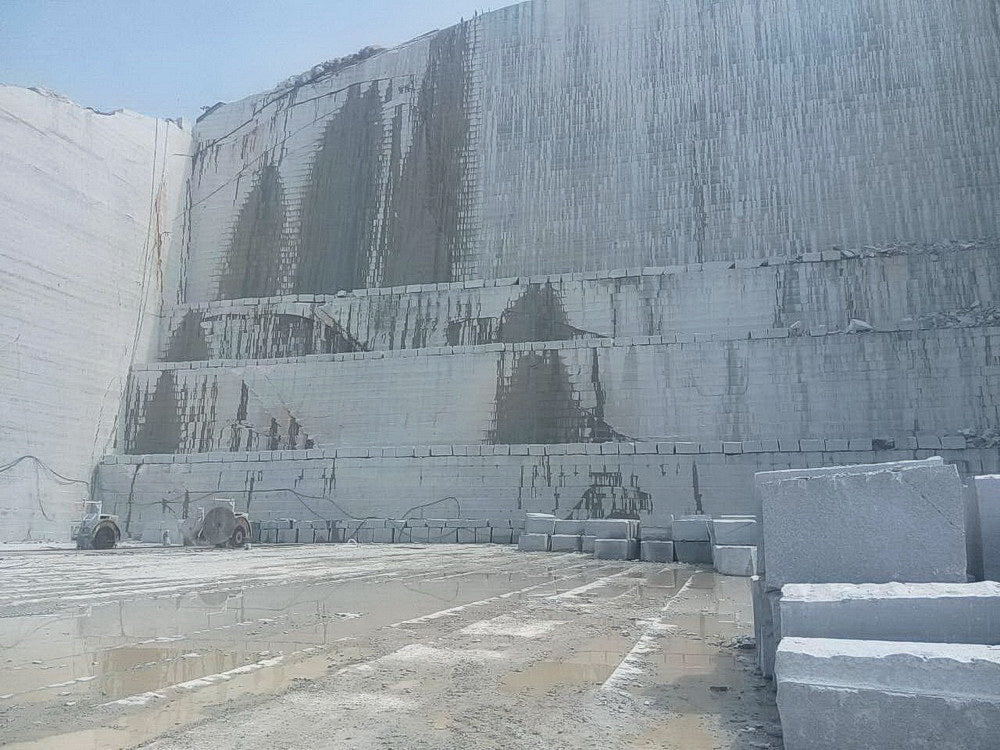Introducing the Mysteries of Granite Quarrying: Where Strength and Style Meet
The globe of granite quarrying is a world where the raw strength of nature merges with human artistry to create structures that stand the test of time with an air of style. From the midsts of quarries to the careful sprucing up in workshops, the procedure of changing granite right into architectural marvels is a complex dancing of tradition and technology. As we peer into the midsts of this old craft, we begin to reveal the surprise ins and outs that shape the very essence of our developed setting.
The Beginnings of Granite Quarrying
In the annals of building history, the beginnings of granite quarrying are shrouded in a tapestry of ancient workmanship and geological marvels. Dating back to old Egypt and Mesopotamia, the extraction of granite from quarries marked the beginning of a trip that would at some point lead to the production of some of the world's most renowned structures.
Granite quarrying's roots can be traced to the knowledgeable artisans who acknowledged the rock's resilience and aesthetic appeal. With a mix of primitive tools and sheer resolution, these early quarry employees uncovered granite blocks that would certainly come to be the building blocks of people.
As human beings developed, so did the methods of quarrying granite. The Romans, renowned for their engineering expertise, created advanced methods for extracting granite to construct monoliths, holy places, and roads that stood the test of time.
The tradition of these old quarrying practices remains to shape contemporary architecture, with granite continuing to be a sign of stamina and sophistication in construction tasks around the globe. (granite quarries in south africa)
Devices of the Quarrying Trade
The development of granite quarrying techniques from old civilizations to contemporary times highlights the important duty played by the tools of the quarrying profession in shaping the sector's techniques. In ancient times, quarrying tools were fundamental, typically including blades, hammers, and wedges made from products like bronze or iron. These devices required significant manpower and time to extract granite blocks from quarries.

Additionally, the intro of pneumatic tools and high-powered equipment has substantially minimized the physical labor called for in quarrying procedures, improving worker safety and security and performance. As the quarrying industry continues to innovate, the tools of the profession remain at the forefront of driving progress and forming the future of granite extraction.
Drawing Out Blocks of Granite
Using precision machinery and advanced methods, the extraction of granite blocks from quarries has come to be an innovative process in the contemporary quarrying sector. The first step includes recognizing the place and size of the granite down payment to determine one of the most efficient wikipedia reference removal approach. When an ideal site is selected, the extraction procedure begins with the drilling of openings for the placement of explosives. Controlled blasting techniques are then utilized to disintegrate the granite right into convenient areas.

Sprucing Up and Completing Techniques
To accomplish a flawless surface area on granite blocks, experienced craftsmens use a collection of meticulous polishing and ending up techniques. After the preliminary extraction and forming procedures, the granite blocks undergo a complete sprucing up stage to improve their all-natural charm and sturdiness.
In addition to polishing, completing techniques are applied to additional improve the granite's appearance. By carefully picking and using these polishing and completing methods, artisans can change raw granite obstructs right into exquisite items that display both stamina and beauty.

Environmental Effect and Sustainability
With the expanding focus on ecological awareness in the industry, granite quarrying practices are increasingly looked at for their effect on natural resources and long-term sustainability. Additionally, the transport of granite from quarries to refining centers creates carbon exhausts, additionally contributing to ecological destruction.
To minimize these impacts and ensure sustainability in granite quarrying, sector stakeholders are embracing different actions. Implementing sophisticated technologies to minimize power intake and water use, recovering quarried land for environmental restoration, and advertising responsible sourcing practices are some strategies being used. Accreditations such as the Forest Stewardship article Council (FSC) and the Management in Power and Environmental Style (LEED) aid consumers identify eco pleasant granite products.
Final Thought
To conclude, granite quarrying is a procedure that requires specialized tools and strategies to remove blocks of granite and polish them to a high degree of finish. While the environmental impact of quarrying can be substantial, initiatives are being made to enhance sustainability techniques in the industry. On the whole, granite quarrying is a delicate equilibrium between harnessing the strength and sophistication of this natural rock while minimizing its impact on the environment.